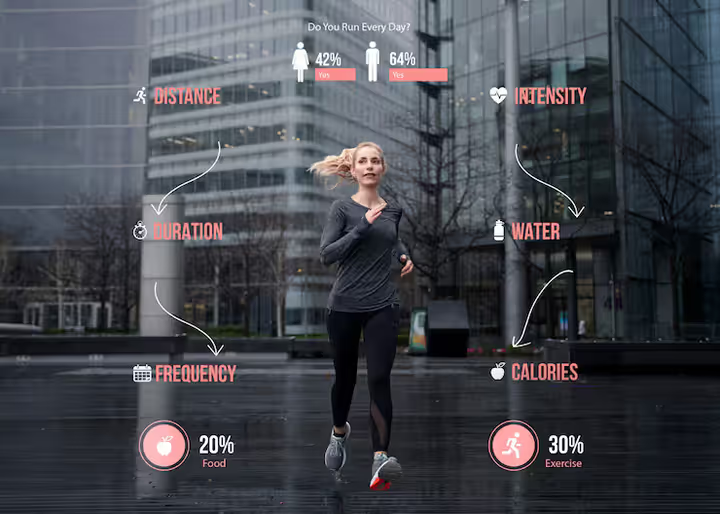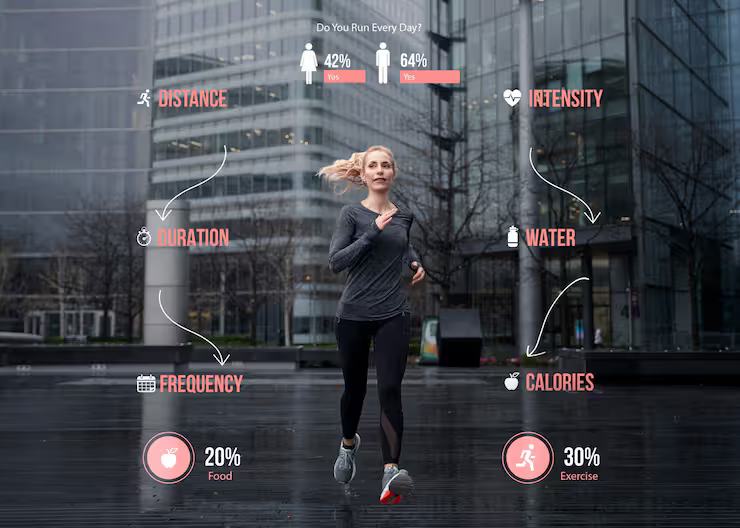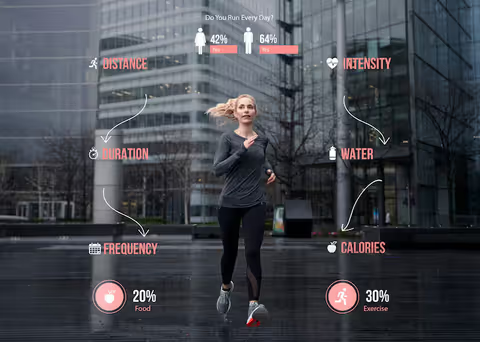
Fitness Trends Shaping the Futur A Complete Guide to Modern Wellness
Modern fitness is no longer limited to gym workouts or athletic performance. Today, it represents a holistic approach that connects physical movement, nutrition, mental well-being, and technology. As more people shift toward hybrid lifestyles, wellness has become a global priority that blends mind and body health.
This evolution exists because of growing awareness about chronic diseases, sedentary work environments, and the mental health impact of modern life. People now seek sustainable fitness routines, data-driven insights, and personalized solutions that help them stay active, mindful, and balanced in their daily lives.

Importance
Fitness and wellness are central to improving quality of life and preventing lifestyle-related illnesses such as diabetes, hypertension, obesity, and depression. The global rise in chronic diseases has encouraged people to adopt proactive, preventive fitness habits.
Why it matters today:
-
Promotes physical and mental balance in an increasingly stressful world.
-
Reduces the risk of chronic conditions through consistent movement and healthy habits.
-
Encourages people of all ages to stay active and maintain independence as they age.
-
Integrates technology, allowing personalized progress tracking and motivation.
-
Builds community and accountability through group workouts, online challenges, and shared wellness goals.
Who it affects:
-
Individuals of all age groups from school-aged children to older adults.
-
Remote workers and professionals managing sedentary lifestyles.
-
Fitness trainers, health educators, and wellness influencers adapting to digital platforms.
-
Organizations and policymakers designing workplace wellness programs and national fitness initiatives.
Problems it helps solve:
-
Physical inactivity and low motivation due to time constraints.
-
Lack of awareness about balanced fitness integrating movement, rest, and nutrition.
-
Mental stress, burnout, and lack of social connection.
-
Need for personalized and flexible fitness approaches that fit busy lifestyles.
Recent Updates
The year 2025 has brought new technologies and approaches that redefine how people stay fit. Wearable devices, AI-powered fitness platforms, and holistic wellness programs are shaping the future of health.
Key fitness trends shaping 2025:
| Trend | Description |
|---|---|
| Wearable Technology | Smartwatches and trackers measure heart rate, sleep, and movement for data-driven insights. |
| Mobile Fitness Apps | Offer customized workouts, mindfulness routines, and progress tracking anywhere, anytime. |
| Functional Fitness | Focuses on movement patterns used in everyday life to improve strength and mobility. |
| Programs for Older Adults | Age-specific exercises that enhance balance, posture, and independence. |
| Holistic Wellness | Integration of physical activity, mental health, nutrition, and sleep management. |
| AI-Driven Coaching | Personalized recommendations and virtual coaching powered by artificial intelligence. |
| Sustainable Fitness | Eco-friendly practices, outdoor activities, and conscious consumption within fitness culture. |
Fitness is no longer limited to gyms hybrid and home-based workouts, recovery therapies, and mental wellness programs are now part of the mainstream. Inclusivity and accessibility are also expanding, with fitness routines designed for all ability levels and lifestyles.
Laws or Policies
In India, fitness and wellness are strongly supported through several national initiatives and frameworks.
Key programs and policies include:
-
Fit India Movement: Encourages citizens to make physical activity part of their daily routine.
-
Age-Appropriate Fitness Protocols: Official fitness standards for children, adults, and seniors, guiding exercise duration and intensity.
-
Educational Institution Guidelines: Frameworks to promote fitness, sports, and emotional well-being across schools and universities.
-
National Action Plan for NCDs: Promotes physical activity as a key preventive health measure.
-
Consensus Physical Activity Guidelines for Asian Indians: Recommends about 60 minutes of daily activity combining aerobic, strength, and flexibility exercises.
These initiatives reflect a growing national and global emphasis on making fitness an essential part of education, work, and community health.
Tools and Resources
To embrace modern wellness, individuals can explore various digital tools and programs designed to enhance motivation, consistency, and overall well-being.
Top fitness and wellness tools:
-
Wearable Devices: Track metrics like heart rate, sleep, and step count for performance insights.
-
Workout & Habit Apps: Provide structured routines, habit-tracking systems, and progress analysis.
-
Nutrition & Meal Trackers: Help balance diet, hydration, and energy intake for optimal results.
-
Mindfulness & Meditation Apps: Support emotional balance and stress reduction.
-
Virtual Fitness Platforms: Offer live or recorded sessions for yoga, HIIT, dance, and strength training.
-
Self-Assessment Tools: Online calculators to measure BMI, body fat, and fitness progress.
-
Government & Institutional Guidelines: Provide evidence-based protocols for active living.
These tools make it easier to build consistency, track progress, and personalize health routines — key elements of long-term wellness success.
FAQs
Q: How much physical activity should adults aim for each day?
A: Adults should engage in about 60 minutes of daily activity, including aerobic, strength, and flexibility training.
Q: What are the most popular fitness trends for 2025?
A: The leading trends include wearable technology, functional fitness, holistic wellness, mobile training apps, and AI-driven personal coaching.
Q: How has technology changed the fitness industry?
A: Technology has made fitness more personalized and accessible through smart wearables, AI-based recommendations, mobile workouts, and virtual trainers.
Q: What is functional fitness, and why is it important?
A: Functional fitness focuses on exercises that mimic daily movement patterns, improving balance, coordination, and strength for practical use in everyday life.
Q: Are there specific programs supporting fitness in India?
A: Yes. The Fit India Movement and government-issued fitness protocols promote physical activity and wellness education at every age level.
Conclusion
Fitness trends in 2025 highlight a new era of health one that values connection between the body, mind, and technology. From smart devices and virtual workouts to mindfulness and sustainability, the future of wellness is holistic, inclusive, and adaptive.
Governments, organizations, and individuals are now aligning to create healthier, more active communities. By adopting modern wellness practices, tracking progress with digital tools, and maintaining consistent habits, everyone can build a balanced lifestyle that supports long-term vitality.
The future of fitness is not just about strength or appearance it’s about living smarter, moving better, and feeling stronger every day.






